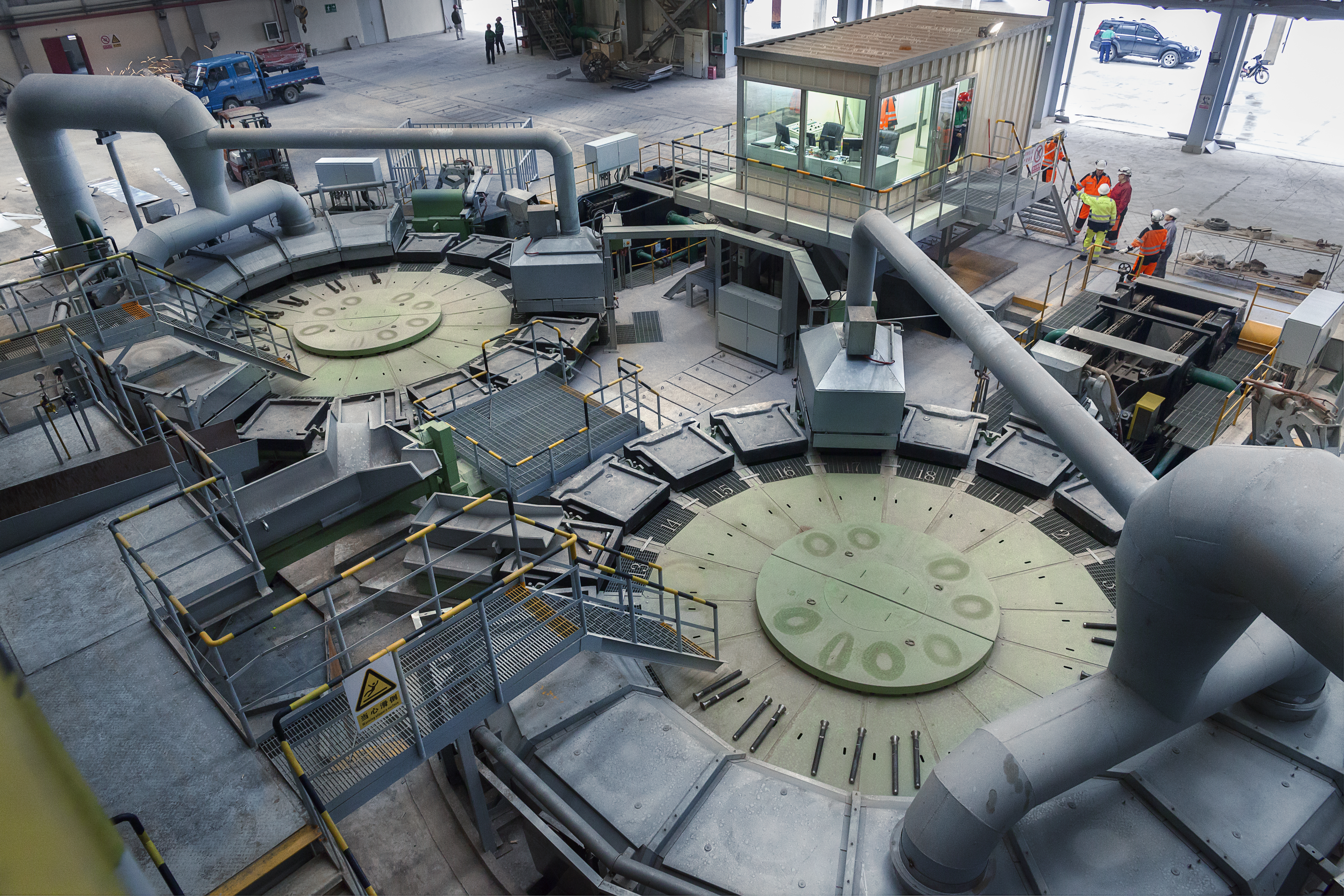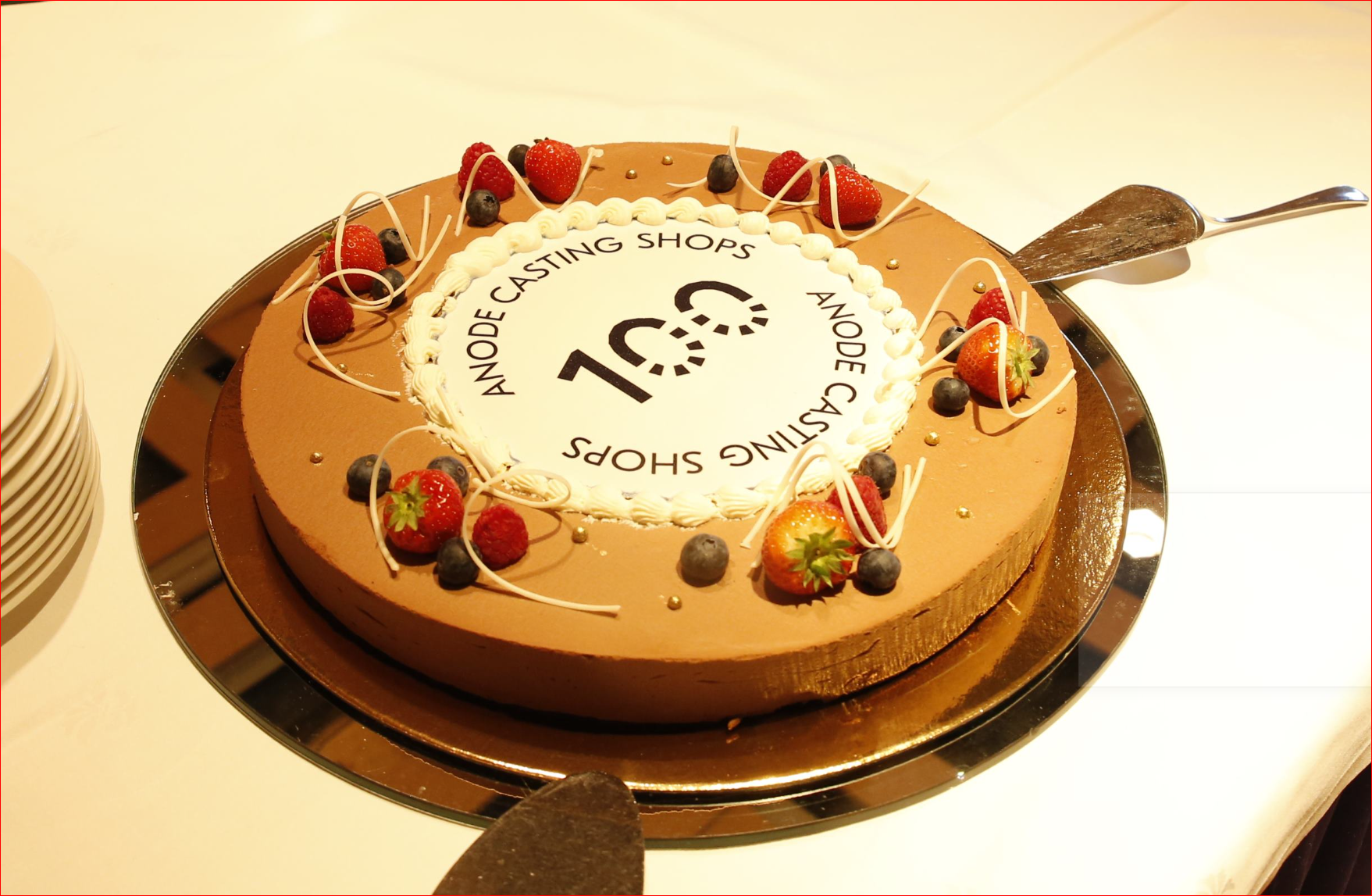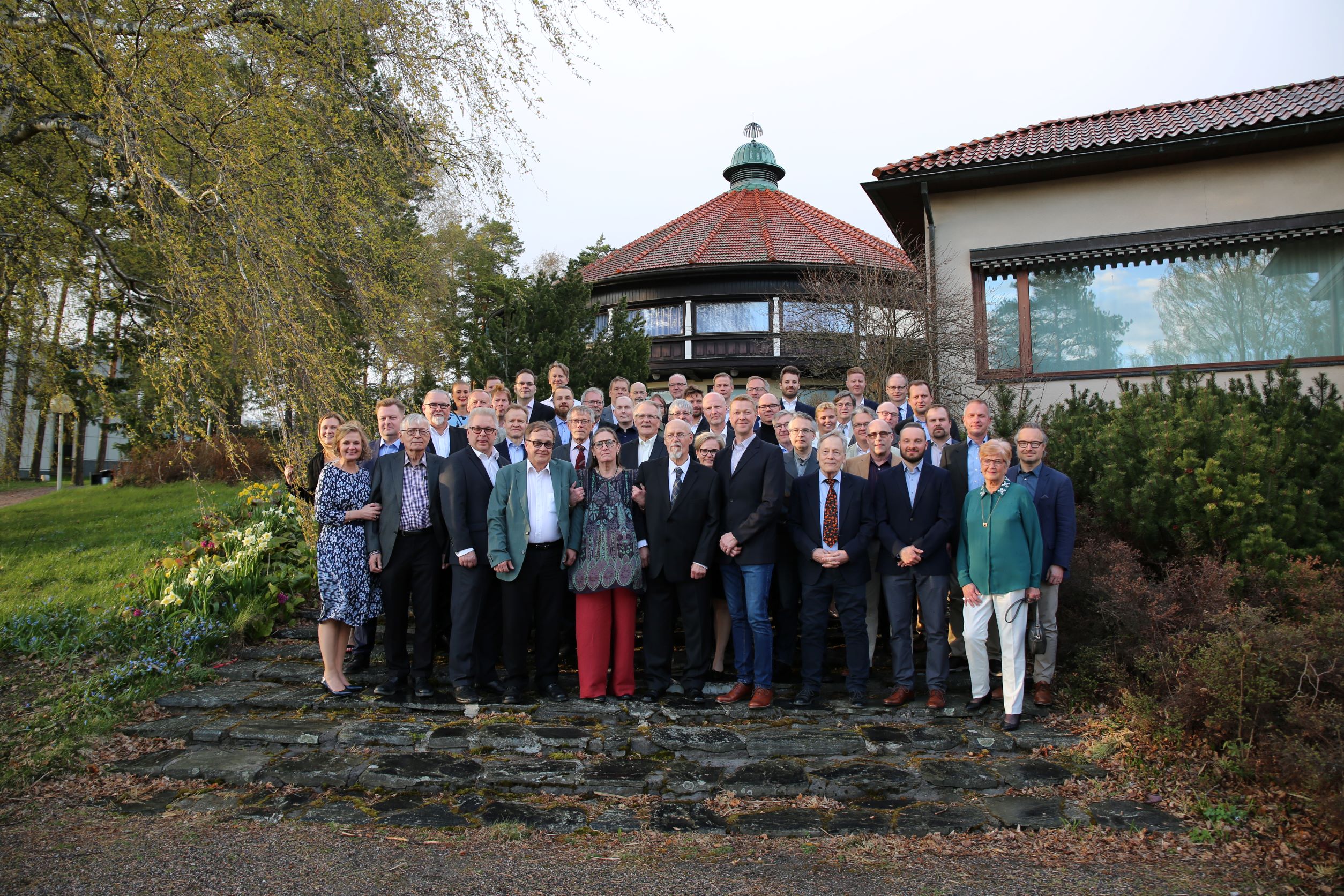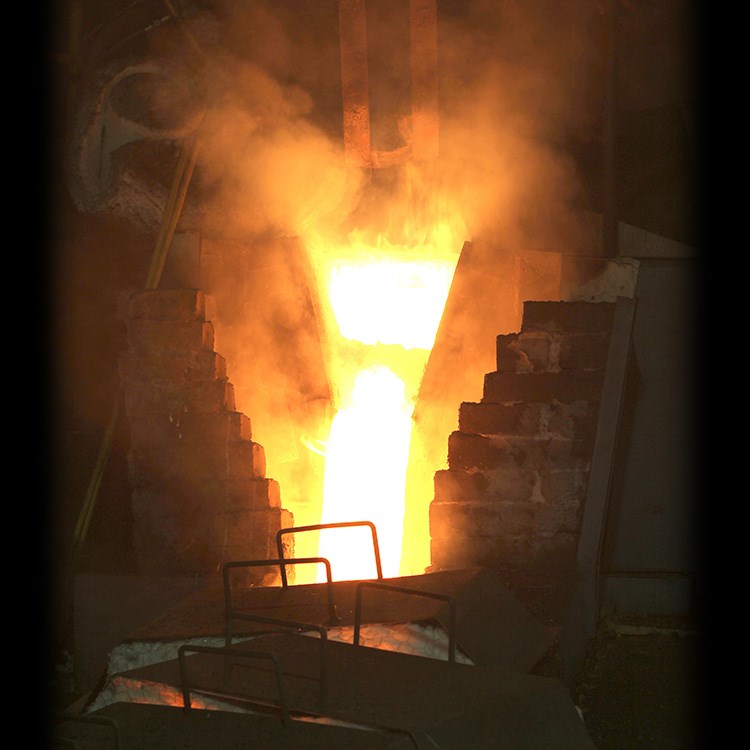Anode casting shops started their journey into the world in 1969 from Harjavalta, Finland. This was where development and testing of an automatic weighing and casting machine began. Before then, anode casting was performed manually.
“The first anode weighing and casting machine was delivered to the United States in 1972, and the first complete anode casting system was installed at the Harjavalta smelter the following yearm” says Sami Maaniittu, Director, Anode Casting PG at Metso Outotec. “Since then, the technological development of the equipment has been steady and the number of customer references has increased year by year.”
Significant step forwards
The modern anode casting technology used by Metso Outotec is based on the dual casting wheel concept that was developed in the 1990s. It is the most widely-used anode casting method today. The dual casting wheel concept significantly improved the capacity and made efficient use of space through optimized equipment design and layout. The method utilizes two parallel casting wheels that can be used either simultaneously or separately. The first equipment using dual casting was delivered in 1997, and the technology soon became the standard solution for large anode casting systems.
Today, anode casting shops are highly automated. Particular attention is paid to safety, reliability and minimizing energy consumption. The idea behind this is to maximize output and quality of production lines whilst minimizing production costs. To meet these demands, Metso Outotec has developed cutting-edge anode casting technology that is hydraulic-free, electrically operated and safe. The systems use accurate and reliable self-adjusting operation, which results in a fast and flexible material-handling chain.
“In the casting process, the anodes are cast to a precise shape. Plates weighing some 400 kg must be of the same weight and quality with zero rejections. The accuracy of the anode plates made with Metso Outotec equipment is first class, +/-1 kg per plate, which corresponds to an error of half a cup of coffee when pouring molten copper into a mold of about 50 liters in 12 seconds. Successful casting produces very flat anodes that can be placed very close to the cathodes during electrolysis without fear of short-circuiting. This, in turn, saves both electricity and pool space,” explains Sami Maaniittu.
Bright future
Anode casting shops have a long service life. Metso Outotec delivers one to three completely new systems and five to ten smaller modernizations every year. The importance of service life and capacity optimization is increasing constantly. These can be influenced by a modular concept and standardization, for example. New focus areas include electrification, digitalization and advanced automation solutions.
“Our customers, and by extension all of the 100 anode casting shops we have delivered, are located all around the world. The availability of services and spare parts is important, and we always ensure high availability,” says Lauri Närhi, Head of Sales for the Smelting Business Line at Metso Outotec.
“I believe that Metso Outotec will continue being at the forefront of anode casting. Our technological expertise is strong, and we are competitive globally. There is some competition, but only in China. Nevertheless, many Chinese customers for whom quality is important also choose our casting technology. Why take a risk with a critical high-tech piece of equipment costing EUR 4 - 6 million when the cost of equipment for the whole plant is calculated in hundreds of millions; especially when you get a performance guarantee from the supplier?” says Lauri Närhi.



